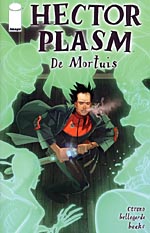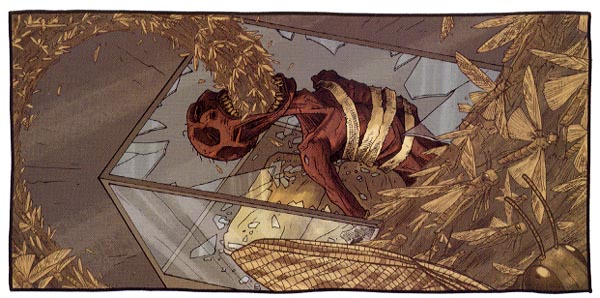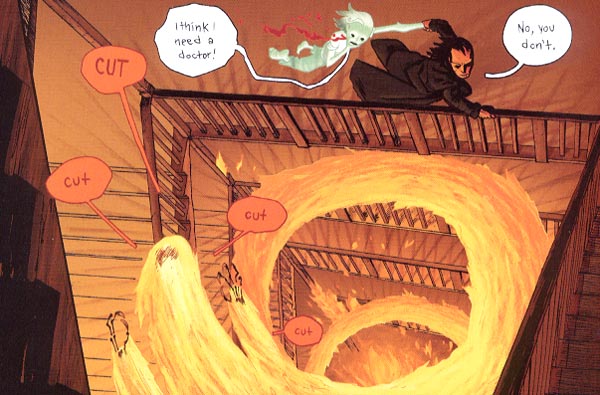 Written by Benito Cereno
Written by Benito Cereno
Art by Nate Bellegarde
48 pages, color
Published by Image Comics
The problem with horror comics, I think, is that people are spoiled these days by special effects in television and movies. Horror becomes in the audience’s mind something continually moving, never letting you catch your breath. With the static nature of images in comics, that’s not the case at all. It’s a very different kind of horror, much more subtle—and if executed properly, in some ways superior.
Hector Plasm was born with a caul on his face, and that marked him as someone special. He’s a well-walker, able to not only see spirits, but interact and defeat them if necessary. Sometimes Hector goes looking for these restless creatures, other times they find him when he’s least expect them. But no matter what, there seems to be an endless supply of them just waiting to be sent onwards, whether they like it or not.

A collection of short stories (some previously published, others brand-new), I must admit that I wasn’t immediately sold on Hector Plasm: De Mortuis at first. The opening stories seemed too slight, too average. It’s admittedly tough to tell compelling works in three pages, but none the less, I just wasn’t convinced. Then Benito Cereno began to tell the origin of Hector’s abilities and how his childhood progressed, and I was hooked. Hector ceased playing the role of “guy who defeats spirits” and became a genuine character in his own right. I don’t think it’s a coincidence that the later stories in the book are the stronger ones as well; Hector in the Egyptian museum at Niagara Falls, or moving through the haunted Wilfred Hall are both genuinely creepy and exciting to read, Cereno getting a real sense of horror across to the reader. He’s also able to bring across a bit of humor in his Civil War story, which has one of the best reasons for why there are so many Civil War-related hauntings that I’ve ever heard.

Nate Bellegarde’s art coupled with Jacob Baake’s colors brings a visual style to Hector Plasm that finishes the process that Cereno’s writing began in an attempt to provide the reader with memorable horror stories. Bellegarde’s line art is naturally attractive, drawing people who are realistic while still maintaining Bellegarde’s own artistic style and quirks. He brings a real creep factor to images like the locusts pouring out of the mummy’s mouth and filling the room, or a flaming spirit spiraling up a set of stairs in hot pursuit of our hero. Bellegarde puts a lot of care into just about every single panel, and it really shows. This is one of the most visually impressive debut books I’ve seen in a long while. Everything is clearly defined and thought out; there’s no learning curve on display here. Kudos also have to go to Baake’s colors in Hector Plasm, which mesh perfectly with the art. Baake knows when less is more, as well as when it’s time to pull out the big coloring guns. It’s a very consistent look for the book, and thanks to Baake you can almost feel the heat pouring off the page with illustrations of fire. Baake and Bellegarde are a great team, and hopefully future works by Bellegarde will continue the collaboration.
This is one of the stronger books by new creators that I’ve read in a while. I’d love to see them work on a full-length Hector Plasm book next, because I think that they’ve proven by the end that they’ve learned to master the short story. This is, ultimately, a lot of fun to read and several of the scenes in the comic are ones that a week later still remained fresh and vivid in my mind. Cereno and Bellegarde understand how to make static images just as powerful as a multi-million dollar movie budget, and I look forward to their next project. These are two creators to watch out for.
